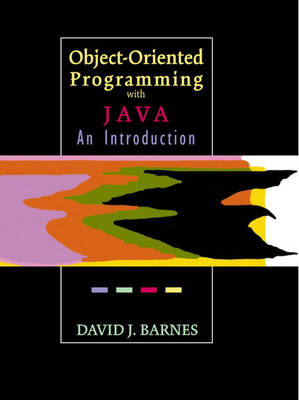
Object-Oriented Programming with Java
Pearson (Verlag)
978-0-13-086900-5 (ISBN)
- Titel ist leider vergriffen;
keine Neuauflage - Artikel merken
For an undergraduate course in Object-Oriented Programming or a course in Intermediate Java Programming.
Appealing to programmers and non-programmers alike, this complete introduction to Java shows students how to use this versatile and popular object-oriented programming language as a primary tool in many different aspects of their programming work (not just for creating programs with graphical content within Web pages), and includes complete descriptions of the fundamental elements of Java with step-by-step instructions on how to compile and run a program. Well-organized, clearly written, and visually engaging, it gives students real hands-on experience as it guides them through all of Java's functions and capabilities—reinforcing their understanding with periodic reviews and helping them see Java's everyday applicability through many interesting case studies. Emphasizing the importance of good programming style—particularly the need to maintain an object's integrity from outside interference—it teaches students how to harness the power of Java in object-oriented programming, and enables them to create their own interesting and practical every-day applications.
DAVID J. BARNES has lectured and taught Computer Science at the University of Kent at Canterbury, England, since 1983. The University of Kent at Canterbury was Europe's first Authorized Academic Java Campus in agreement with Sun Microsystems, the originators of Java. David Barnes has been a member of the British Computer Society since 1988. His research interests include software engineering and computer science education.
I. JAVA FUNDAMENTALS.
1. Bits, Bytes, and Java.
2. Common Program Components.
3. Creating and Using Objects.
4. Defining Classes.
5. Adding Sequential Behavior.
6. Adding Selective Behavior.
7. Adding Repetitive Behavior.
8. Packages and Utility Classes.
9. Arrays and Further Statements.
10. Collection Classes.
II. FURTHER LANGUAGE FEATURES.
11. Exceptions.
12. Input-Output.
13. Interfaces.
14. Class Inheritance.
15. Abstract and Nested Classes.
III. GUI PACKAGES.
16. AWT Applications.
17. Swing.
IV. ADVANCED FEATURES.
18. Threads.
19. Networking.
V. APPLETS.
20. Applets.
VI. JAVA FOR SIMULATION.
21. Simulation.
APPENDICES.
A: The Primitive Data Types.
B: Number Representations.
C: Java Operators.
D: Java Reserved Words.
E: Common Design Patterns.
F: Stylistic Conventions.
G: The Java 2 SDK.
H: Javadoc.
I: Glossary.
Bibliography.
Index.
| Erscheint lt. Verlag | 18.2.2000 |
|---|---|
| Sprache | englisch |
| Maße | 234 x 179 mm |
| Gewicht | 1487 g |
| Themenwelt | Informatik ► Programmiersprachen / -werkzeuge ► Java |
| Informatik ► Software Entwicklung ► Objektorientierung | |
| Mathematik / Informatik ► Informatik ► Web / Internet | |
| ISBN-10 | 0-13-086900-7 / 0130869007 |
| ISBN-13 | 978-0-13-086900-5 / 9780130869005 |
| Zustand | Neuware |
| Haben Sie eine Frage zum Produkt? |
aus dem Bereich


